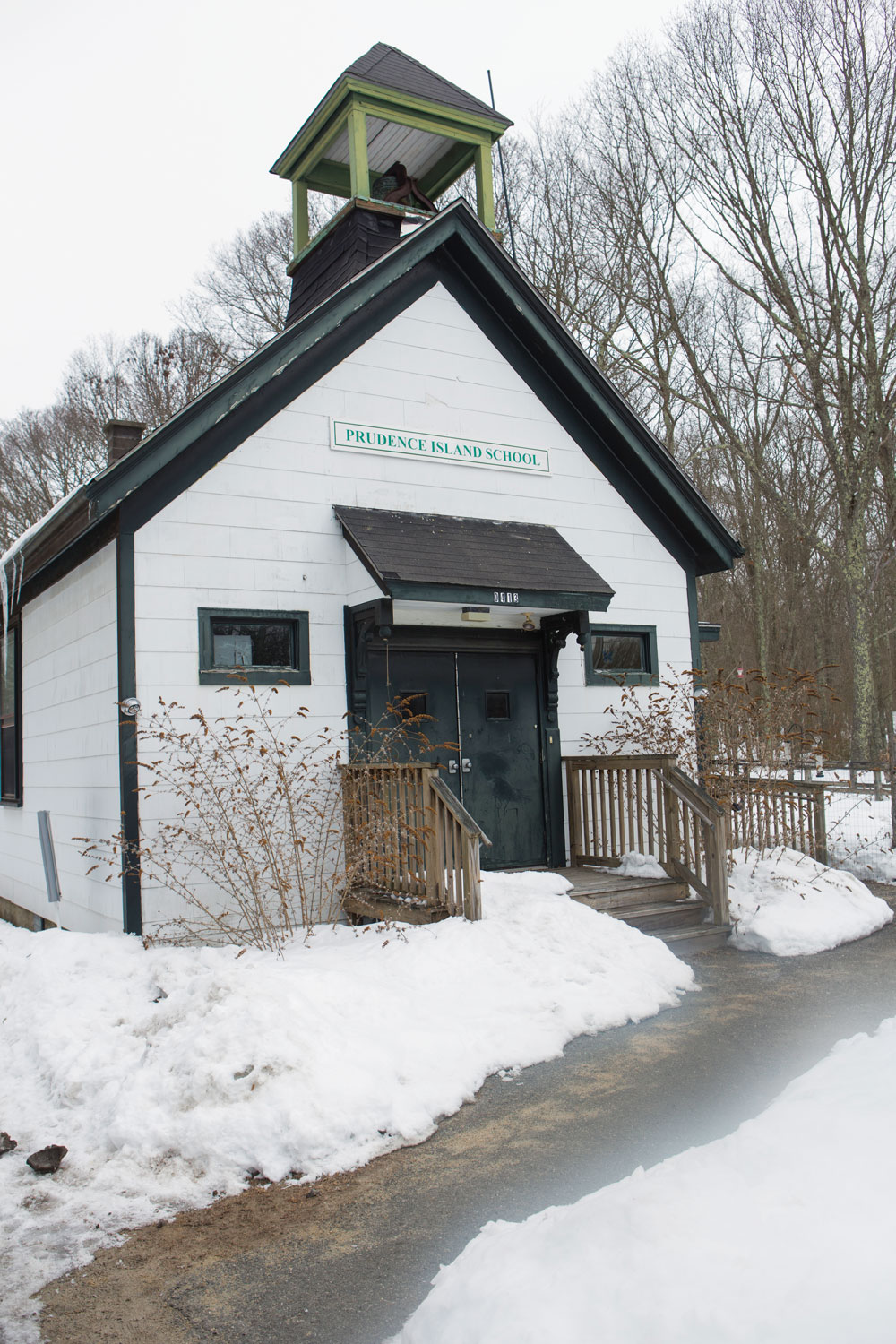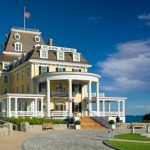Prudence Island During Winter
When the cold settles on Prudence Island in the middle of Rhode Island’s Narragansett Bay, the 150 year-round residents notice a special quality of light they call “winter blue” reflecting off the water. Photographer Ron Cowie found a place of self-sufficient people with deep roots, a place where he felt “time has a different sensibility.” […]

Coffee By Design | Portland, Maine
Photo Credit : Katherine KeenanWhen the cold settles on Prudence Island in the middle of Rhode Island’s Narragansett Bay, the 150 year-round residents notice a special quality of light they call “winter blue” reflecting off the water. Photographer Ron Cowie found a place of self-sufficient people with deep roots, a place where he felt “time has a different sensibility.”

Photo Credit : Ron Cowie
Last winter had already settled in hard, more bitter than most people could recall, when photographer Ron Cowie first stepped off the ferry onto the landing at Prudence Island. Though Cowie had lived only 40 miles away in Charlestown, Rhode Island, for a decade, the island, which is part of Portsmouth and sits smack in the heart of Narragansett Bay, remained one of those mysterious, all-but-hidden places that you mean to go see one day, maybe. That day for Cowie came on the last day of January, and the cold that ripped through his clothes gave him the gift of crystalline light when the sun rose over the bay. He returned three times, recording the way winter lay on the land, and its 150 year-round islanders.

Photo Credit : Ron Cowie
“My first goal was to arrive with no impressions,” he said. “I wanted no preconceived ideas.” He came wanting to have what he called “a conversation with the island” through the lens of his camera. On foot and by car, he covered almost every inch of the landscape, roughly seven miles long and two miles wide, sometimes spending hours with no other people in sight, only flocks of seabirds or geese. On an island that even in the height of summer is known for its sense of solitude and quiet, the winter silence became his constant companion.

Photo Credit : Ron Cowie
“It’s very peaceful,” Cowie said. “But it’s also very stark. A lot is untouched. I wanted to see how to turn what may seem to some like bleak isolation into a positive. What I found was that there is a collective knowledge, a rhythm they’ve built their life around; a sense of history that connects them. There was no sense of a ‘We’ve got to put Prudence Island on the map’ mentality. The people who’ve come before them, they seem to still be there. It’s a living work of art.”

Photo Credit : Ron Cowie
One day Cowie met Joe Bains, who, like many islanders, has a split life, keeping a home on the mainland, keeping a home and his heart on the island, where his roots burrow deep. His grandparents first came in the late 19th century, when the island had a thriving summer colony. His parents met on Prudence and moved back there shortly after World War II. His father, like many, was a jack of all trades. He hauled trash, did carpentry, built and painted houses. Joe went to the one-room school, and soaked up the island’s history and lore.
“When I was a kid,” Bains said, describing in a few words the world-apart feel of Prudence Island, “you just had to be tall enough for your feet to hit the pedals and you could see over the steering wheel to drive, that’s all. I was 12 when I started driving, and my summer job from then on was driving my father’s trash truck.”

Photo Credit : Ron Cowie
On an early March afternoon, Cowie put away his camera and boarded the last ferry back to Bristol. “That last hour before getting on the last ferry back, I had a sense of completion. I had wanted to have a conversation with the island, and I got that.” — Mel Allen

Photo Credit : Ron Cowie

awaiting its owners.
Photo Credit : Ron Cowie

the southern end of Prudence Island was the site of a major naval munitions depot, where more than 30 storage bunkers were packed with ammunition ready for loading onto ships. More than 20 of the bunkers remained active until 1973. Today it’s conservation land, part of the Narragansett Bay National Estuarine Research Reserve, attracting hikers, mountain bikers, birdwatchers, and wildlife.
Photo Credit : Ron Cowie

Photo Credit : Ron Cowie

Photo Credit : Ron Cowie

Photo Credit : Ron Cowie

Photo Credit : Ron Cowie

Photo Credit : Ron Cowie

and last winter’s harsh mix of snow and cold.
Photo Credit : Ron Cowie

Photo Credit : Ron Cowie
To see more of Ron Cowie’s work, go to: roncowiephoto.com








I am a lifelong islander. I have been going there for 30 years. I really enjoyed your article. But marcys will always be marcys to me.
We spent a few summers on the west side of the island. Our rental house was from the Fairweather family. My last year was the year I graduated from highschool (LaSalle) went into the military. My sisters and I have very fond memories and still make our own stuffed quahogs as we did back then.
Great article, and the photography is excellent, wish I could have some of it in my home.
My wife and I have visited the island several times, earlier with our 4 children and lately just us, most recently this August. We love the quiet solitude and peacefulness. You can anticipate it on the ride over and feel it as you step off the ferry.
My parents lived behind Marcy’s house across from the protestant church. Bean suppers with Louie as the auctioneer and chasing the blues on the west side are cherished memories. Many old timers winter in Englewood, FL. They have a reunion in Englewood every February. Prudence is magic. My grandparents met there, too. He was from Lkncoln, RI and she was from NY. He came with Joe Baines to fish and she worked in the bakery for the summer. Wonderful article.